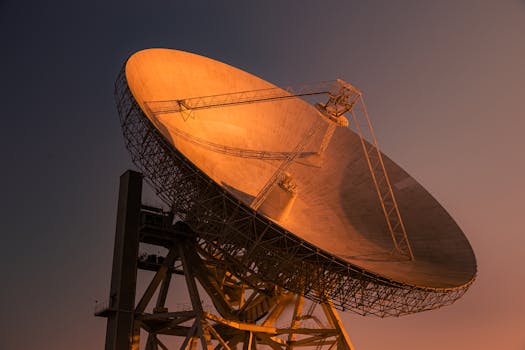Satellite Telecommunications 2023: Key Developments and What They Mean for the Industry

Satellite Telecommunications 2023: Key Developments and What They Mean for the Industry
Satellite Telecommunications 2023 has been marked by significant developments that are transforming the industry. The satellite telecommunications industry has experienced tremendous growth over the past few years, driven by advancements in technology, increasing demand for global connectivity, and the need for resilient and secure communication networks. As we delve into the key developments of 2023, it becomes clear that these advancements are not only expanding the capabilities of satellite telecommunications but are also redefining the future of the industry.
Introduction to Satellite Telecommunications
Satellite telecommunications involve the use of satellites orbiting the Earth to transmit and receive signals, facilitating communication between different locations on the planet. This technology has been crucial for providing connectivity in remote and underserved areas, as well as for supporting critical infrastructure such as navigation, weather forecasting, and emergency response systems. The evolution of satellite telecommunications has been marked by improvements in satellite design, launch technologies, and signal processing, leading to higher bandwidth, lower latency, and more efficient services.
Key Developments in 2023
The year 2023 has seen several key developments in the satellite telecommunications industry. One of the most notable advancements is the launch of new constellations of low-Earth orbit (LEO) satellites. These constellations, such as those launched by companies like SpaceX and OneWeb, are designed to provide high-speed, low-latency internet connectivity globally, including to areas that have been historically underserved by traditional telecommunications infrastructure. Another significant development is the integration of satellite communications with 5G networks, enabling seamless and ubiquitous connectivity. Furthermore, there have been substantial investments in the development of quantum-resistant cryptography to secure satellite communications against potential quantum computing threats.
Additionally, 2023 has witnessed a surge in the adoption of satellite-based Internet of Things (IoT) solutions. The use of satellites for IoT applications such as asset tracking, smart agriculture, and environmental monitoring has become more prevalent, driven by the need for cost-effective and reliable connectivity in areas where terrestrial networks are lacking. The development of smaller, more efficient satellites, often referred to as smallsats, has also been a trending topic in 2023. Smallsats offer a more affordable and agile approach to satellite deployment, allowing for more frequent launches and updates, which can significantly accelerate innovation in the industry.
Implications for the Industry
The developments in satellite telecommunications in 2023 have profound implications for the industry. Firstly, the expansion of satellite constellations and the integration with 5G networks are set to revolutionize global connectivity, making high-speed internet accessible to virtually everyone on the planet. This not only bridges the digital divide but also opens up new opportunities for economic development, education, and healthcare in underserved communities.
Furthermore, the advancements in satellite technology and the adoption of satellite-based IoT solutions are expected to drive growth in the industry. The satellite telecommunications market is anticipated to experience significant expansion, with forecasts indicating substantial revenue increases over the next few years. This growth will be fueled by the increasing demand for satellite services in various sectors, including aviation, maritime, and land mobility, as well as by governments seeking to enhance their communications capabilities.
However, the industry also faces challenges, particularly in terms of regulatory frameworks and the management of orbital debris. As the number of satellites in orbit increases, there is a growing need for international cooperation to establish clear regulations and standards for the responsible use of space. Additionally, the development of sustainable practices for the launch, operation, and disposal of satellites will be crucial to mitigate the environmental impact of the industry.
Conclusion
In conclusion, the key developments in satellite telecommunications in 2023 signify a pivotal moment in the evolution of the industry. The launch of new satellite constellations, the integration with 5G networks, the adoption of satellite-based IoT solutions, and the development of smallsats are all contributing to a future where satellite telecommunications play an increasingly central role in global connectivity. As the industry continues to grow and expand, addressing the challenges of regulation, sustainability, and security will be essential to ensuring that the benefits of satellite telecommunications are realized for all.





